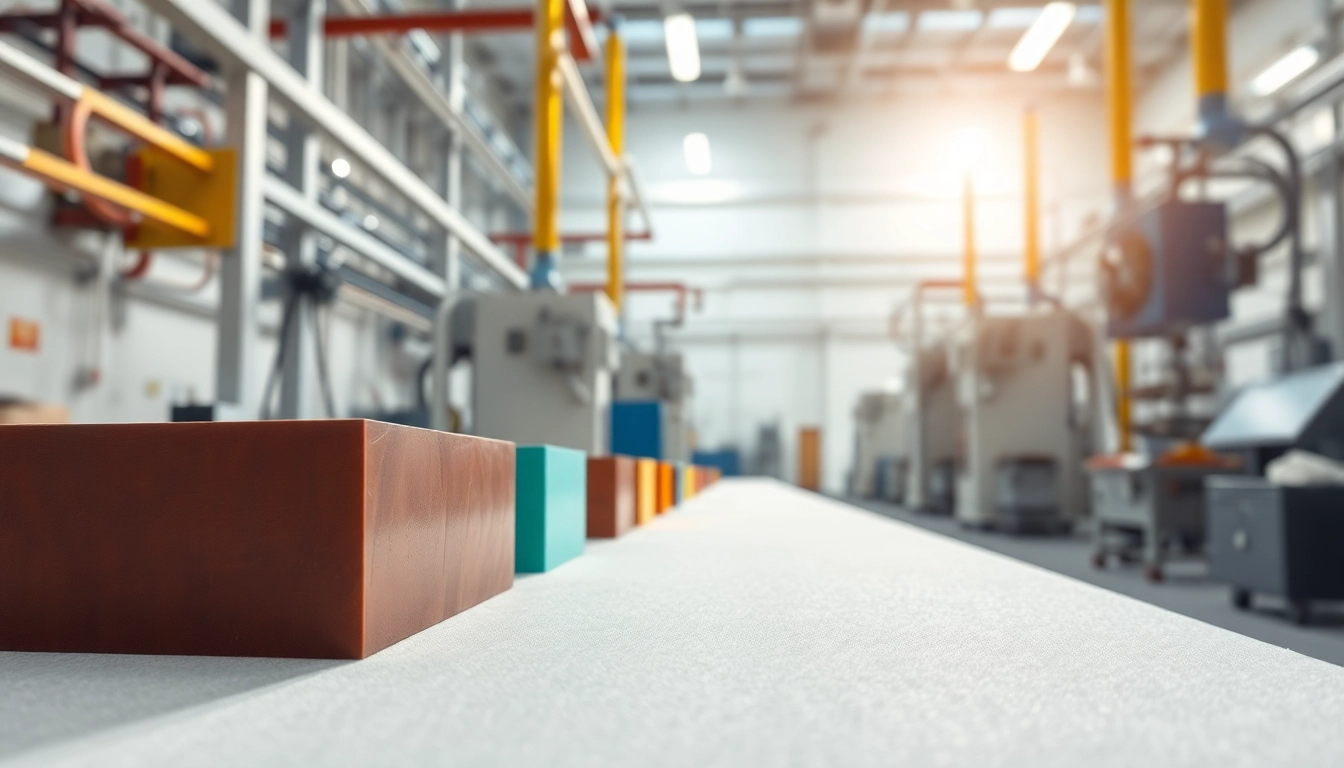Understanding Stainless Steel Wire
What is Stainless Steel Wire?
Stainless steel wire is a type of wire made from steel that contains a minimum of 10.5% chromium, which enhances its resistance to corrosion. It’s widely recognized for its durability and versatility, making it an essential material in various industries. The wire can be produced in different forms and sizes, ranging from very thin strands used in jewelry making to thick wires used in construction.
This alloy’s inherent properties allow it to maintain strength and performance even under extreme temperatures and challenging environments. Its corrosion resistance makes it a preferred choice in applications where exposure to moisture and chemicals is inevitable, such as marine, chemical, and food processing industries. To learn more, visit stainless steel wire sources for further insights.
Key Properties of Stainless Steel Wire
- Corrosion Resistance: One of the most significant advantages of stainless steel wire is its exceptional resistance to rust and corrosion. This property extends the lifespan of products and reduces maintenance costs.
- Strength: Stainless steel wire boasts high tensile strength, making it suitable for applications that require durability and the ability to withstand heavy loads.
- Flexibility: Despite its strength, stainless steel wire can be drawn into fine strands without losing its integrity, allowing for various applications.
- Temperature Resistance: Stainless steel retains its structure and strength at elevated temperatures, making it ideal for areas subjected to extreme heat, such as industrial environments.
- Non-reactive: It does not interact with chemicals, making it safe for use in food and pharmaceuticals.
Different Grades of Stainless Steel Wire
Stainless steel wire is categorized into different grades based on its composition and properties, the most common being:
- 304 Stainless Steel: The most widely used grade, offering good corrosion resistance and weldability, suitable for a variety of non-corrosive environments.
- 316 Stainless Steel: Known for its superior corrosion resistance, particularly in marine environments due to the presence of molybdenum. Ideal for heavy-duty applications.
- 430 Stainless Steel: A ferritic stainless steel used primarily in decorative applications. It is magnetic and offers moderate corrosion resistance.
- AWS (American Welding Society) specifications: Several stainless steel wire grades are also used specifically for wire welding in various industrial applications, characterized by standardized properties for performance.
Common Applications of Stainless Steel Wire
Stainless Steel Wire in Industrial Use
In industrial settings, stainless steel wire plays a crucial role in various applications, including:
- Construction: It is often used in building reinforcement, tension cables, and hanging supports due to its tensile strength.
- Manufacturing: Industries utilize stainless steel wire for producing springs, fasteners, and components that require reliable performance.
- Automotive: Stainless steel wire is employed in making brake lines, safety cables, and structural components for vehicles.
- Aerospace: The aerospace industry relies on stainless steel wire for its strength-to-weight ratio in critical applications.
Utility in Household Projects
Stainless steel wire is not limited to industrial uses; it can also enhance DIY and home improvement projects:
- Gardening: Used for creating garden trellises and supporting plants, its rust resistance ensures longevity.
- Decorative Displays: Ideal for crafting hangers, wall art, and sculptures, adding an aesthetic appeal with durability.
- Safety Wire: Often employed in securing outdoor structures like fences and gates due to its strength and resistance to weather conditions.
Jewelry and Crafting Applications
Stainless steel wire has become a favored choice in the crafting and jewelry-making industry:
- Jewelry Making: Its anti-tarnish properties make it suitable for earrings, bracelets, and necklaces, especially for those with sensitive skin.
- Artistic Crafting: Crafters utilize stainless steel wire for creating sculptures, decorations, and mixed media pieces for its strength and adaptability.
Choosing the Right Stainless Steel Wire
Factors to Consider
When selecting stainless steel wire, several factors should guide your decision:
- Application Requirements: Consider the specific use, as different applications may need various tensile strengths or corrosion resistance levels.
- Wire Gauge: The thickness of the wire affects its strength and flexibility; ensure you select the appropriate gauge for your needs.
- Corrosion Resistance: Depending on the environment, choose the wire grade that can withstand the elements it will be exposed to.
- Cost and Availability: Assess your budget and the availability of materials, as some grades may be more costly than others.
Comparative Strength of Stainless Steel vs. Other Wires
When comparing stainless steel wire to other wire types, consider the following:
- Galvanized Steel Wire: Galvanized wire is cheaper and suitable for lightweight applications but lacks the corrosion resistance of stainless steel.
- Copper Wire: While copper wire is excellent for electrical applications, it tarnishes over time and may not hold up in harsh environments like stainless steel.
- Aluminum Wire: Though lighter, aluminum wire does not compare to stainless steel for strength and durability.
Understanding Specifications and Sizes
It is crucial to understand different specifications and sizes when selecting stainless steel wire:
- Diameter: Wire size is usually specified in American Wire Gauge (AWG); lower numbers indicate thicker wire.
- Breaking Strength: This denotes the maximum load wire can withstand before breaking; ensure to select an appropriate strength grade for your application.
- Coating: Some wires may come with additional coatings for enhanced properties, specifically in corrosive environments.
Maintenance and Care for Stainless Steel Wire
Cleaning and Polishing Tips
To maintain the pristine condition of stainless steel wire, regular cleaning is essential:
- Use Mild Cleaners: A mixture of warm water and mild detergent is generally sufficient for cleaning stainless steel wire.
- Avoid Abrasives: Steer clear of abrasive pads and cleaners, which can scratch the surface and damage the wire.
- Use a Soft Cloth: Soft, lint-free cloths are ideal for drying and polishing after cleaning.
Avoiding Corrosion: Best Practices
Even though stainless steel is corrosion-resistant, it is not immune to rust when exposed to harsh environments:
- Avoid Salt Exposure: For marine applications, ensure cleaning after exposure to salt to prevent pitting.
- Apply Protective Coatings: In high-corrosion areas, consider using additional protective coatings to enhance the durability of the wire.
- Regular Inspections: Conduct routine checks for signs of wear or rust, especially in industrial settings.
Storing Stainless Steel Wire Properly
Proper storage extends the life of stainless steel wire:
- Climate Control: Store in a cool, dry environment to prevent moisture accumulation.
- Use Containers: Keep wires wrapped in plastic or in containers to avoid scratches and tangles.
- Labeling: Clearly label the wires by type and size for easy identification during future projects.
Innovations in Stainless Steel Wire Manufacturing
Recent Technological Advances
The stainless steel wire manufacturing sector has seen significant advancements in recent years:
- Enhanced Production Techniques: New technologies such as precision drawing allow for the production of thinner wires with improved mechanical properties.
- Smart Manufacturing: The adoption of IoT technologies in monitoring production processes ensures high quality and safety standards are maintained.
Environmental Impact of Stainless Steel Production
While stainless steel is recyclable, its production has environmental impacts that are being addressed:
- Recycling Initiatives: Manufacturers are increasingly focused on utilizing recycled materials, which reduce energy consumption and lower emissions.
- Sustainable Practices: Implementation of energy-efficient technologies in production lines aims to minimize carbon footprints.
Future Trends in Wire Solutions
The future of stainless steel wire solutions is promising, with trends that may shape its applications:
- Customization: Demand for customized wire solutions is rising, leading to innovations in sizes and configurations to suit specialized requirements.
- Integration of Advanced Materials: Companies are exploring composites and alloys, blending stainless steel with other materials for enhanced performance.
- Smart Features: Future wires may incorporate sensors for real-time monitoring of stress and strain in various applications.















Leave a Reply